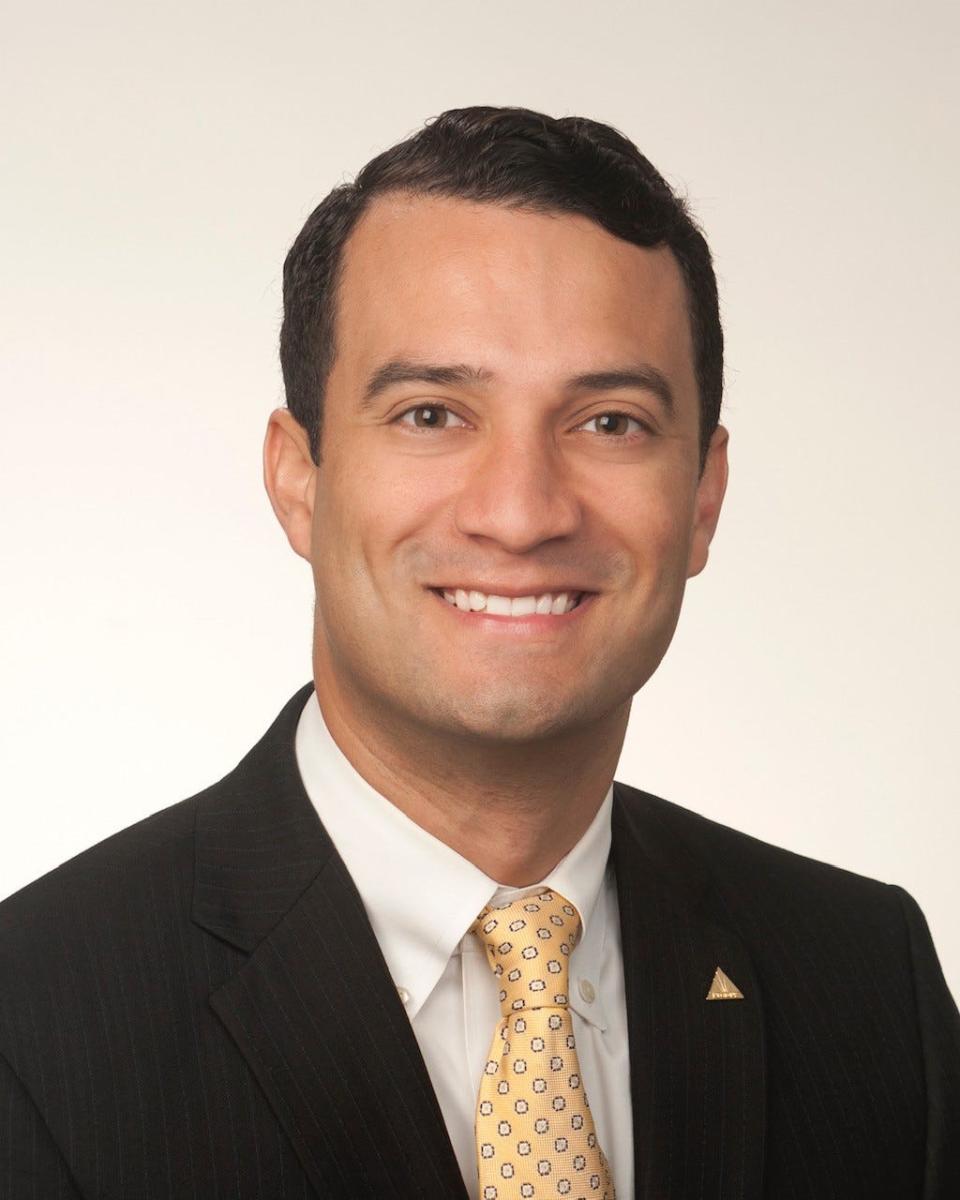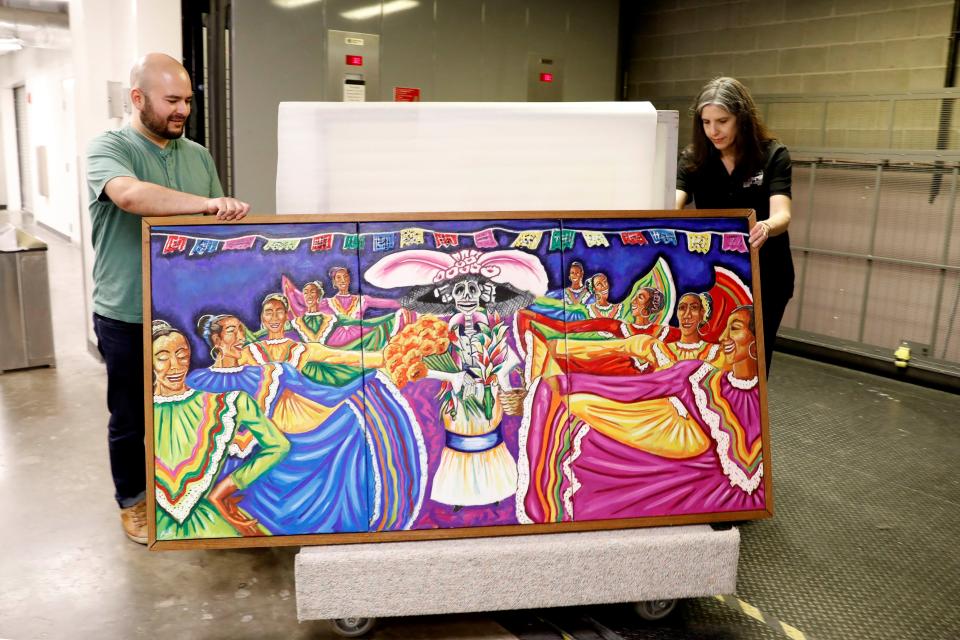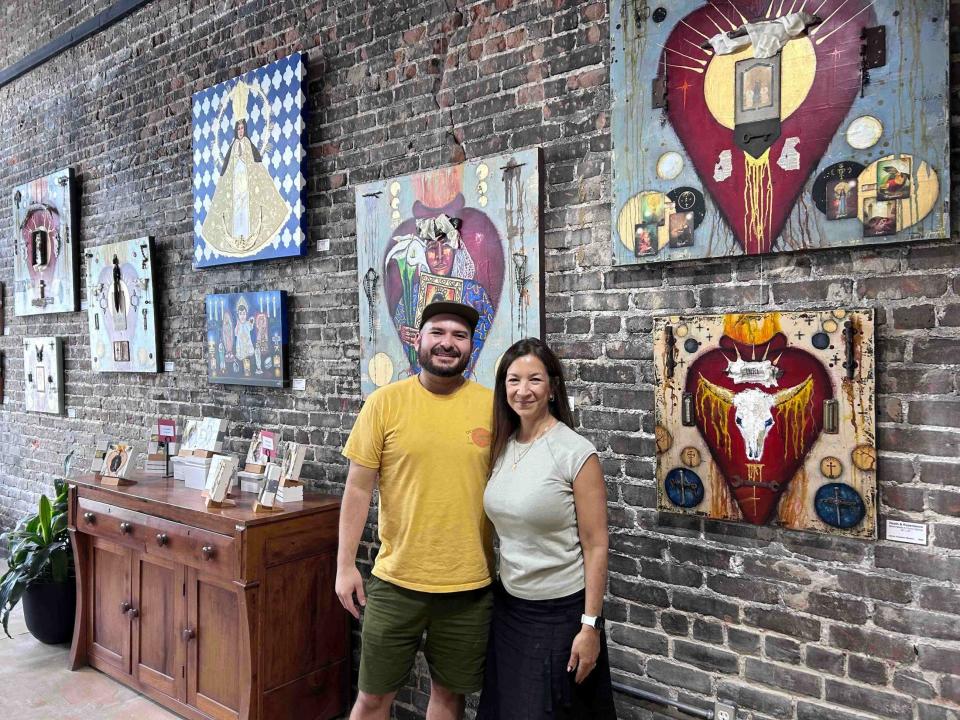What does the Hispanic population of Mississippi look like? It's diverse and growing
Danny Bolaños is a third-generation banker. He started his career at the bottom of the ladder, working his way up to an executive position with The First Bank in the Jackson metro area.
Bolaños, vice president of commercial banking, has received a number of accolades for his business acumen and leadership role in his community. He also is an Hispanic immigrant who moved to Mississippi from his native Costa Rica, where he earned a bachelor's degree before moving to the United States. He emigrated to this country after meeting his future wife during an internship at Disney World in Orlando.

The couple married in 2008, and Bolaños has lived in the Jackson metro area ever since.
Hector Boldo is an artist and is a native of Mexico. He and his husband, Tom Boldo, and fellow artist Jacqueline Wooton, recently opened an art gallery called Nuestro Arte in downtown Hattiesburg. They also are founders of the Mississippi Latinx Art Association. Wooton is from Puerto Rico, a Spanish-speaking U.S. territory in the Caribbean.
Mississippi is home to a growing number of Hispanic and Latinx people who are making a renewed investment in the state. According to the U.S. Census, the Hispanic population in Mississippi increased nearly 30% between 2010 and 2020, when official Census data were collected.
While the total Hispanic population is less than 4% of the state's total population, it is the fastest-growing group in the state. According to the Urban Institute, the Hispanic population in Mississippi is expected to nearly double by 2040 to nearly 50,000 people — up from 28,000 in 2020.
Creative media: Ole Miss student creates a story, now on its way to becoming a film about Latinx culture
The Mississippi Department of Archives and History recognizes the upward trend and has started collecting stories and artifacts to document the trend and follow its progression over time.
"Their stories were not really recorded," said Ivette Ray, director of Curatorial Services at MDAH. "We're starting from there and working our way to the present. It is just a community that has been overlooked."
Hector Boldo was the first to share his story with MDAH. The department bought several of his paintings and he donated other pieces to the MDAH collection. The paintings depict immigrants from many countries around the world, so while the emphasis is on the Hispanic community, the artwork has portraits of women from Hungary, Japan and other countries who moved to Mississippi.
"They (MDAH) don't have much of anything related to or about immigrants, so they are starting a collection about that," Boldo said.

Ray said most of the Hispanic population in the state are full-time residents who work in a variety of industries.
"It's not just sharecroppers working on the farms," she said. "We have doctors, business owners and a lot of them are very talented, they play in the orchestras and things like that, so they bring a lot of every (profession) here."
Creative entrepreneurs: 2 artists form Mississippi Latinx Art Association to give Hispanic artists opportunity, visibility
Ray, herself a native of Mexico, attended bilingual school in Mexico until her family moved to the United States when she was 10, so she knew a little English, but had to adapt quickly when she was enrolled in school.
Ray moved to Mississippi several years ago and worked as an interpreter before joining the MDAH staff. Sincer her arrival, she has been working to gather artifacts and telling the stories of Hispanic and Latinx people in Mississippi.
Some have lived in Mississippi for generations. Others are new to the state — and the country. Either way, their stories reflect their culture and their contributions to the state. Ray said anyone interested in sharing their stories and artifacts can contact her at MDAH. Artifacts don't have be items of value, she said. MDAH is looking for items with historical significance, such as an airplane ticket showing a person's arrival in the U.S., family photos and other documents or memorabilia that show the historical and cultural relevance of the Hispanic and Latinx communities.

"That is very important because it is a part of the story of Mississippi," Ray said.
The Hispanic population may be small, but it is not new to Mississippi. The Spaniards were the first Europeans to arrive in Mississippi — in the 1500s. Some of those who came from Spain included Alonso Álvarez de Pineda, who mapped the coastal areas in 1519, and Hernando DeSoto, who arrived in 1541 after crossing the Mississippi River south of Memphis, bringing with him about 400 soldiers to the Mississippi Delta.
Spain's domination of parts of the Southeast continued until the 1800s, including the Natchez area, according to the Mississippi Encyclopedia.
Today, the Hispanic population is most prominent in Scott County, about 40 miles from the Jackson Metro area. The county is roughly 15% Hispanic, according to the U.S. Census. Other areas where Hispanic populations are higher include Issaquena County in the Delta, Jones County in the Pine Belt and Harrison and Jackson counties on the Coast.
"We are here," Bolaños said. "We live here. We pay taxes here. We buy gas here. We buy our groceries here. We are very much members of this community, and we are contributing members of the financial system."
Bolaños and other Latinx business leaders are members of LABA Link, an organization that connects Latinx-owned businesses and business people to provide networking opportunities. The Hispanic and Latinx populations are comprised of people from many countries, so they are not always connected to each other outside their own families or social groups.
"For us it's important to close the gap that people think, well Latinos are a different sector or a different set of people, but we are very much involved with what is going from a political world, a financial world, we have a very high impact on different industries," he said. "We have a community that is full of entrepreneurs and other people who are creating jobs."
To learn more or get involved
To share your story or artifacts with MDAH, contact Ivette Ray at iray@mdah.ms.gov.
For more information about LABA Link, visit labalink.com.
For more information about the Mississippi Latinx Art Association, visit mslatinxart.com.
Do you have a story to share? Contact Lici Beveridge at lbeveridge@gannett.com. Follow her on X @licibev or Facebook at facebook.com/licibeveridge.
This article originally appeared on Hattiesburg American: MS Hispanic, Latinx population documented by MDAH as population grows

